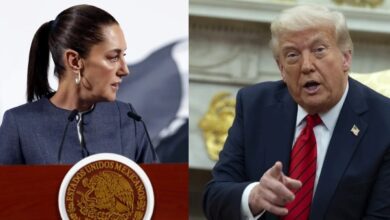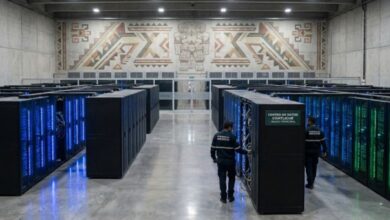The Future Is Ours: Netflix Bets Big on a Spanish-Language Philip K. Dick Revolution

The desert outside Montevideo glows a rusty copper. A camera drone hums overhead, catching a convoy of battered solar trucks cresting the dunes. It’s not Blade Runner’s Los Angeles or Minority Report’s Washington—it’s Latin America, 2047, reimagined in Spanish. The Future Is Ours, Netflix’s new eight-episode adaptation of The World Jones Made, is the streamer’s most audacious step yet into Spanish-language science fiction. It’s also a declaration that the future no longer belongs exclusively to English-speaking dreamers.
From The Eternaut to Dick: A Spanish-Language Inflection Point
When The Eternaut became an unexpected global hit last year, it proved that Spanish-language sci-fi could command an audience far beyond the Southern Cone. Netflix didn’t wait to see if that success was a fluke. Its follow-up gamble is bolder: Philip K. Dick rewritten through Latin America’s lens.
The cast itself reads like a map of the continent—Uruguay’s Enzo Vogrincic, México’s Emiliano Zurita, Argentina’s Delfina Chaves and Marco Antonio Caponi, Colombia’s Marleyda Soto—each embodying a different accent of the same language and the same shared crisis. “We have approached Philip K. Dick’s work with great respect and admiration, finding themes that are powerfully relevant today,” said Francisco Ramos, Netflix Latin America’s content chief, in an interview with Forbes. He called the production “of the highest ambition in Latin America” and described the region as a force of resistance in the new order.”
That phrase—force of resistance—feels deliberate. It turns Latin America from a backdrop into a protagonist, a region no longer translating other people’s myths of the future but authoring its own.
Why Ecology Replaces Nukes—And Why That Gamble Fits
Dick’s 1956 novel imagined a world scarred by nuclear fire. The series trades those blasts for something slower, more intimate, and terrifyingly familiar: climate collapse. In The Future Is Ours, a federation of South American nations called FedSur rules through conservation decrees so strict they verge on tyranny. Food is rationed. Technology is restricted. Survival feels like punishment.
Into this world steps Jonás Flores (Zurita), an imprisoned man who can see the future. His captor, Hugo Crussí (Vogrincic), becomes both warden and disciple as Jonás’s prophecies ignite a continent desperate for miracles. The story mirrors Dick’s obsessions—belief, power, free will—but refracts them through Latin America’s reality: the moral exhaustion of societies oscillating between exploitation and preservation.
“Climate change is not an imported theme; it’s a local wound,” Ramos told Forbes. From Chilean droughts to Amazonian deforestation, the apocalypse here feels documentary, not fantasy. Even Isa Dick Hackett, the author’s daughter and an executive producer, endorsed the shift. “Setting it in Latin America, with its rich culture and incredible talent, makes this adaptation inventive and bold while preserving my father’s essence,” she told Forbes.
The risk, of course, is dystopia fatigue. But the premise—a prophet leveraging ecological despair into messianic power—couldn’t be timelier. In a region where technocrats promise salvation and populists weaponize hope, The Future Is Ours might be the first sci-fi thriller that feels like tonight’s news.

Industrial Muscle Behind the Mythmaking
What distinguishes this project from earlier forays into the Latin American genre isn’t only scale; it’s infrastructure. Showrunner Mateo Gil (The Minions of Midas) commands a directing corps that spans the continent: Brazil’s Vicente Amorim and Daniel Rezende, Argentina’s Jesús Braceras, each bringing their own visual dialect. The crews are regional, not imported.
Behind the lens are artisans with global credentials: cinematographers Adrián Teijido and Luis Sansans (Narcos: México), production designer Carlos Y. Jacques, art director Julián Romera, and a writers’ room bridging México, Uruguay, Colombia, and Argentina. “The goal was to make a Spanish-language show that doesn’t have to explain itself in English,” one producer told Forbes. “We wanted to prove we can do world-class sci-fi without switching tongues.”
That ambition has teeth because of who’s backing it. Argentina’s K&S Films—fresh off The Eternaut—joins forces with Electric Shepherd Productions, the Philip K. Dick estate’s company, led by Hackett. The alliance marries local execution with international IP stewardship, ensuring authenticity on both ends: Latin America’s voice, Dick’s DNA.
The scale has industrial consequences. Every frame shot in Uruguay or Argentina trains a new generation of VFX artists, gaffers, and sound designers fluent in the grammar of high-budget genre. The Eternaut proved Latin America could do spectacle; The Future Is Ours aims to make spectacle sustainable.
Hype, Hazards, and the Road to a Spanish-Language Sci-Fi Canon
Adapting Dick is notoriously treacherous. Too many films chase the neon gloss and miss the hallucination underneath—the anxiety of knowing and not knowing, of truth mutating under pressure. The challenge for The Future Is Ours is to resist two traps that swallow most “global” science fiction.
First, the trap of placelessness. FedSur can’t look like a generic dystopia with Spanish subtitles. Its architecture, its bureaucracy, its propaganda have to feel rooted in the region’s contradictions: bureaucratic improvisation, environmental rebellion, faith as both solace and sedition. Viewers need to recognize the heat, the chaos, the beauty of a continent that already lives the future’s dilemmas.
Second, the prophet trap. Jonás can’t be just a plot engine spouting riddles; his charisma must expose why desperate societies crave certainty. “What happens when belief becomes addiction?” Gil asked rhetorically in a production interview quoted by Forbes. “That’s the question we want to burn into every episode.” If the show nails that tension, it could transcend the category of adaptation and become something rarer: an argument about freedom and fatalism staged in the language of the Americas.
Streaming economics make that ambition risky. Budgets are tightening, and Spanish-language projects still fight for parity with English originals. Yet Netflix sees a strategic opportunity in the genre. Global audiences understand prophecy and apocalypse as easily as they know superheroes. If The Future Is Ours lands, it could solidify a high-concept pipeline. These Spanish-first productions aren’t treated as “foreign content” but as essential chapters in a global conversation about the future.
Ramos told Forbes the series aims to “demonstrate that these types of stories can also be told from our countries, in Spanish and with exceptional quality.” The bar is high, but so is the appetite. The talent is already there; the terrain—climate crisis, political extremism, faith in decline—is painfully honest.
When the final credits roll next year, the measure of success won’t just be ratings. It will be whether the show convinces viewers that the language of tomorrow can be Spanish without translation, that Latin America’s scars can double as science fiction’s raw material, and that its dreamers, finally, don’t need permission to imagine the end of the world—or its rebirth.
Also read: ¡Wepa! Puerto Ricans in Comics Turn Panels into Power and Memory





